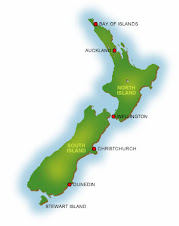Erik’s nature logic part 1: Cities=smog, mountains=fresh air, therefore weekends=population movement out of cities and into the mountains. This is just as true in Anchorage and the Chugach Mountains as in Auckland
On Saturday the 17th of October, I took my car out for its first outing to Karekare Beach Alaska
Over the week I have been staying busy working on my thesis and cooking tasty meals (or going over to my friends when they are cooking tasty meals). I’ve now got a pretty mean chicken curry recipe down and the salmon stir fry is also quasi-gourmet. Unfortunately, a number of my international friends are leaving soon, including Marcel, who flies back to Germany Alaska
My Rotary presentations have also been taking off and in the past two weeks I have spoken to four different Rotary clubs and at the District Rotary Foundation Seminar. The presentations seem to be quite well received and I always get a number of intriguing questions at the end, which I thoroughly enjoy. One of the presentations I held last week was to my sponsoring Rotary Club from Eagle River
Last weekend I signed up for the uni tramping club’s advanced bush skool, which was held in the Kaimai Range south-east of Auckland. The dozen or so participants (generally the more experienced members of the tramping club) were broken up into three teams and left to supply themselves with everything they needed. In my case that meant bringing fruit salad, rice pudding, and cake along with all my other tramping gear. Boy did we have a delicious dessert! We arrived latish Friday night and tramped through the dark to our first campsite, then woke up a few short hours later to work on navigation and “bush bashing” techniques—the NZ equivalent of what dad calls “the alder thrash.” Well I must say, the kiwi bush is a little more tricky than Alaskan alder, namely due to a vine called “supple-jack”, which has surprisingly tasty buds, and will catch onto anything and everything you wear. Off-track bashing a short 2 km downhill took our group a good four hours, to give you an idea of what it was like. We got back a little late Saturday night again (10 hour tramp) and set up a bivouac under a lattice of sticks and ferns, which did the job (granted it did not rain). On Sunday we hiked out and practiced stream-crossings and pack floating in Karangahake Gorge before heading back to Auckland







